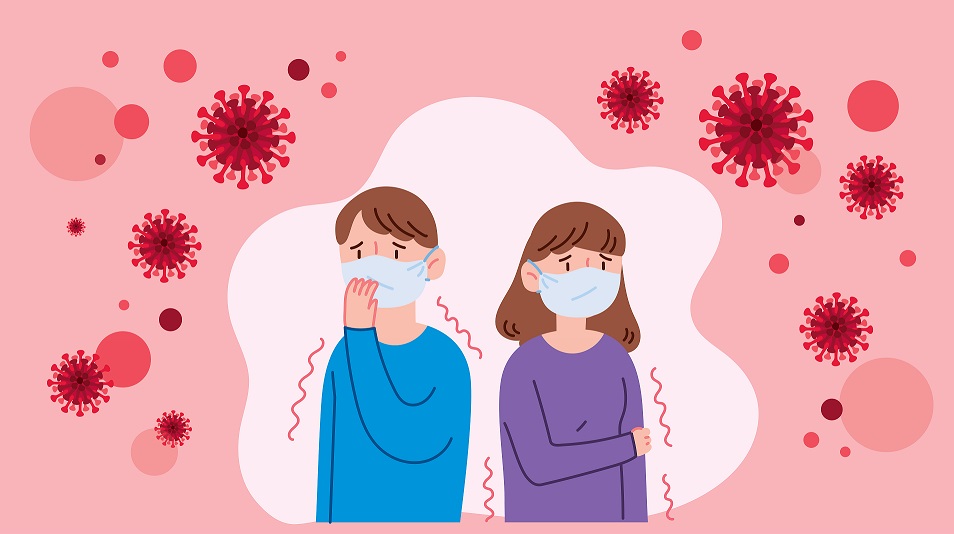
- March 13, 2020
- COVID-19, Coronavirus
Fear of the coronavirus is manifesting as racism against people who are of Chinese or Asian descent after the virus was first identified in China in December.
More than 2 million Asian Americans and Pacific Islanders work in health care, transportation and service industries and are facing xenophobic and racial discrimination in the workplace in addition to increased exposure to communicable diseases, the Asian Pacific American Labor Alliance (APALA) said March 5.
Individuals around the world are being shunned, shamed, and verbally or physically assaulted as fear over the coronavirus spreads. A woman who appeared to be Asian and was wearing a face mask while at a New York City subway station was attacked by a stranger in February. A Costco food sample vendor told a Korean woman and her mixed-race son to move away from his samples, questioning whether they had been in China, NPR reported.
SHRM Resource Spotlight
Managing Communicable Diseases in the Workplace
A Vietnamese artist was told by an art gallery director in London not to attend a function there because of anxiety over the virus, which causes the respiratory illness known as COVID-19. The director later apologized for her words and withdrew from the art fair.
The Twitter hashtag #JeNeSuisPasUnVirus—"I'm not a virus"—has grown in popularity since February. It reflects, Euro News reported, "the increasing frustration of French-Asian citizens who are facing a new wave of stigma and discrimination in the wake of the epidemic."
[SHRM members-only toolkit: Managing Through Flu and Other Epidemics in the Workplace]
The U.S. Centers for Disease Control and Prevention (CDC) has appealed to the public to remain calm while trying to quell misinformation.
"Being Chinese or Asian American does not increase the chance of getting or spreading COVID-19," the agency says on its website. "People, including those of Asian descent, who have not recently been in an area of ongoing spread of COVID-19 or been in contact with a person who is a confirmed or suspected cases of COVID-19, are not at greater risk of acquiring and spreading [it] than other Americans. Viruses cannot target people from specific populations, ethnicities or racial backgrounds."
More than 20.4 million people living in the U.S. are of Asian descent, according to the Pew Research Center; those who are of Chinese heritage make up the largest group of Asian people, at 4.9 million.
Sen. Dianne Feinstein, D-Calif., whose state has about one-third of the nation's Asian population, called the rise in racism toward Asian-Americans "unconscionable."
"People of all ages, races and ethnicities are susceptible to this disease," Feinstein stated. "Bigotry toward any one group for a virus they have nothing to do with makes no sense."
The virus's origination in China in December—a time when many individuals traveled to that country or had relatives from there visit the U.S. to celebrate the Lunar New Year—could cause employers to wrongly presume that people who are Chinese have a higher risk of exposure to the virus, employment attorneys Melissa Peters and Alka Ramchandani-Raj of Littler Mendelson said in an e-mail.
They warned in February that employers need to be careful about making such presumptions "and be cautious that they treat all employees the same."
Employers need to also be careful "when they hear things in the workplace that may seem to target those members of a specific protected class and take proper action, including reiterating and reviewing its anti-discrimination, harassment, bullying and retaliation policies and conducting investigations where needed."
What Employers Can Do
Employers should be aware that patients, clients and others may refuse service from workers of Asian descent and need to prepare staff on how to respond, the APALA pointed out. It advises employers to include a protocol against racial discrimination in their COVID-19 response. Bystander intervention training, it noted, is necessary so employees know how to react when they witness discrimination. Intervention can include:
-
Standing between a targeted individual and a hostile person to create a physical separation.
-
Distracting the harasser while the individual who is singled out is escorted to safety.
-
Speaking up and saying that hostile behavior is not acceptable in the workplace. When someone is flippant or makes a joke about COVID-19, APALA said, speak up and say something such as "That's not funny. And that is not how the virus actually works."
-
Recording details of the incident, including date, time and location. It suggests obtaining permission from the victim to report the incident at www.standagainsthatred.org.
Managers should set aside time at a staff meeting or before a shift to outline expectations of workplace behavior, share information and reaffirm the dignity of those who typically are targets of harassment and discrimination. Employers can print and post this sign in the workplace.
And employers can give workers who are subjected to discrimination time and space to process what happened while making sure they are able to complete their shift.
"Under no circumstances," said the AFL-CIO-affiliated organization, "should workers of Asian descent have their hours cut due to discrimination."
[Managing Communicable Diseases in the Workplace]
Educating workers on the nature of the virus is important to ward off potential stigmatization, misunderstanding or overreaction, according to Eckert Seamans Cherin & Mellott, a law firm based in Annapolis, Md.
"If companies are learning about xenophobia within their workforce, they should be sure to send out educational materials to their employees to be sure they understand that the transmission is through proximity to someone who is infected, not nationality," said Karen J. Elliott, an attorney with the firm. The CDC encourages public health officials and others to help counter stigma by:
- Maintaining privacy and confidentiality of those seeking health care and who may be part of any contact investigation. The CDC urges employers to not make determinations of risk based on race or country of origin. If an employee is confirmed to have COVID-19, the CDC instructs employers to inform employees of their possible exposure but maintain confidentiality as required by the Americans with Disabilities Act. Employees exposed to a co-worker with confirmed COVID-19 should refer to CDC guidance for how to conduct a risk assessment of their potential exposure.
-
Share accurate information about how the virus spreads and raise awareness without increasing fear. The CDC has videos employers can share with their employees.
-
Speak out against negative behaviors, including negative statements on social media about groups of people, or exclusion of those who pose no risk from regular activities.
-
Share the need for social support for people who have returned from China or are worried about friends or relatives in the affected region.
-
Engage with stigmatized groups in person and through media channels, including social media.
Source: https://www.shrm.org/
Categories
Archive Post





